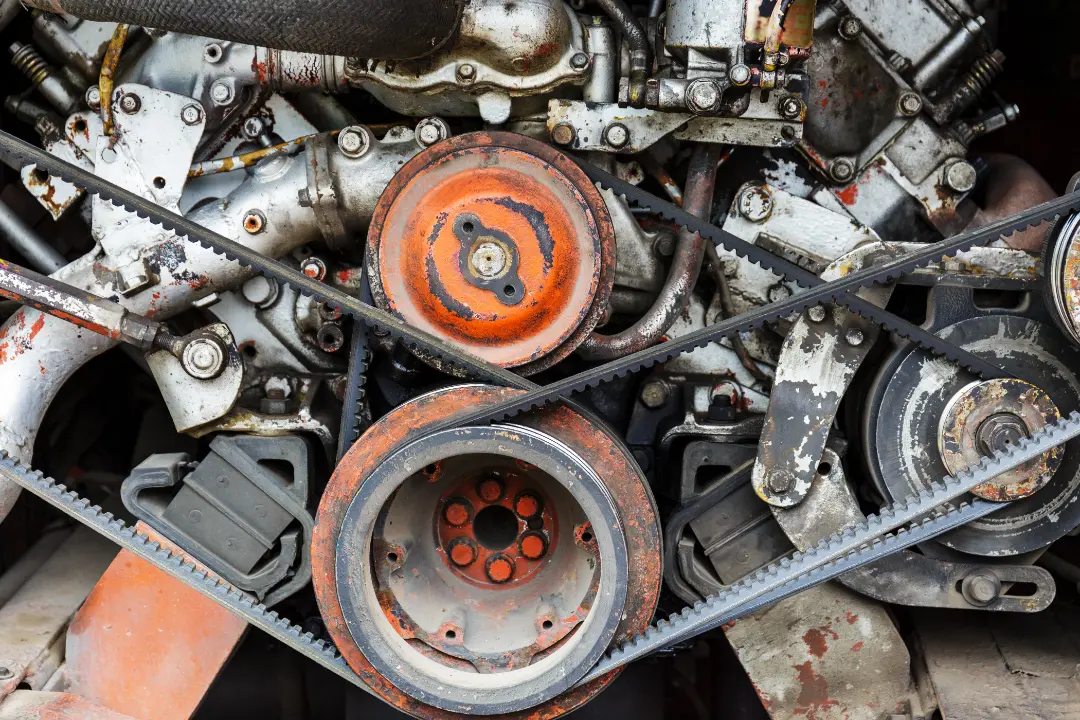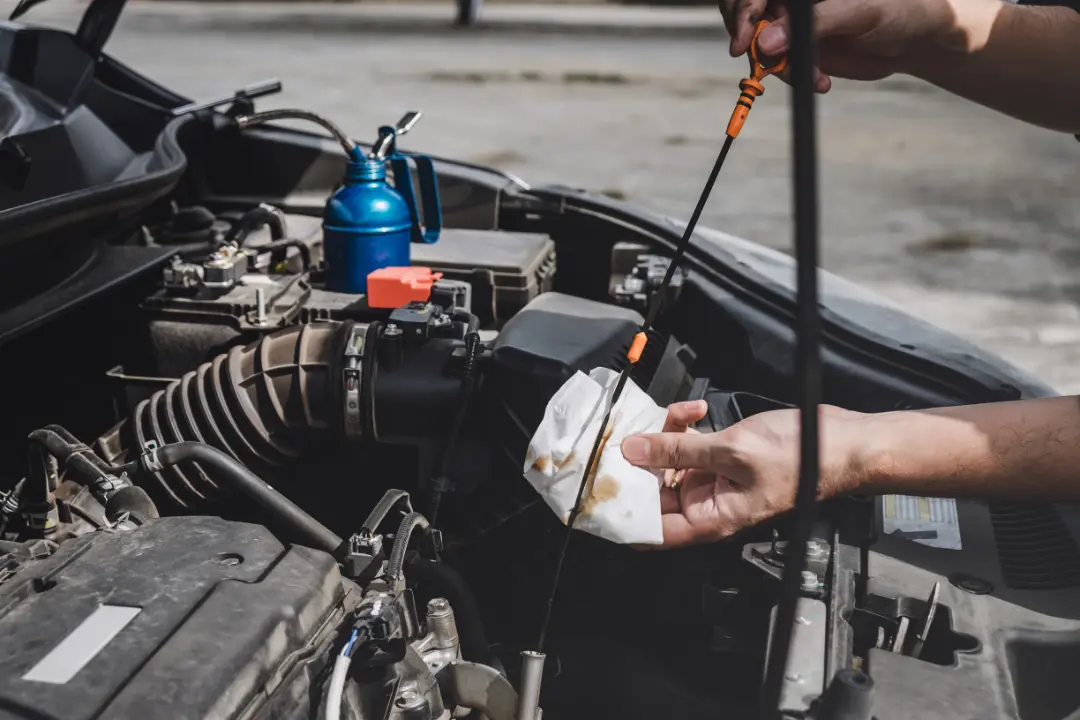Ensuring that your car tyres have the correct pressure is crucial for both safe and efficient driving. However, do you know how to put air in your tyres? This article will provide you with simple steps to check and adjust your tyre pressure like a professional. By following these steps, you can avoid common mistakes and ensure your car handles optimally on every trip.
Key Takeaways
- Maintaining the correct tyre pressure is vital for vehicle safety, performance, and fuel efficiency.
- A reliable tyre pressure gauge (digital or manual) and an air compressor or pump are essential for checking and adjusting tyre pressure at home or petrol stations.
- The recommended tyre pressure for a vehicle can be found in the owner’s manual or on a sticker inside the driver’s side door jamb. It should be checked when the tyres are cold to ensure accurate measurements.
Understanding the Significance of Tyre Pressure
The pressure in your tyres is crucial for your car’s performance on the road. Ensuring the correct tyre pressure allows for even weight distribution when handling, cornering, and braking. This, in turn, prevents sluggish steering and helps maintain control at higher speeds. Keeping the recommended tyre pressure can also reduce fuel consumption.
Proper tyre inflation is also important for the lifespan of your tyres. Keeping your tyres properly inflated can prevent over-inflation, which can cause excessive wear on the centre tread, and under-inflation, which can result in faster overall wear. Premature tyre replacement due to improper inflation is something that every driver wants to avoid.
However, the significance of tyre pressure goes beyond vehicle performance and economy. Your safety and that of your passengers is also at stake. Overinflation can lead to a weak grip on the road, while underinflated tyres can increase the risk of tyre blowouts, undermining vehicle safety and performance.
It is clear that understanding tyre pressure is not just about the numbers on a gauge. It is about ensuring your vehicle’s optimal performance, economy, and, most importantly, safety.
Essential Tools for Tyre Inflation
To ensure that your vehicle’s tyres are inflated properly, you need two essential tools: a tyre pressure gauge and an air compressor or pump. These tools are necessary whether you’re inflating your tyres at home or in a garage. Using these tools, you can achieve the correct tyre pressure, which is important for efficient and safe driving.
Tyre Pressure Gauge
When it comes to checking your tyre pressure, the first tool you need is a tyre pressure gauge. Two types of gauges are available in the market – manual and digital.
Digital tyre pressure gauges are easy to use and provide quick and straightforward readings. They often have backlit screens that make it easy to read, even in low-light conditions. Being user-friendly and convenient, they have become quite popular among drivers.
On the other hand, manual tyre pressure gauges are analogue devices that require the user to interpret the measurement from a dial or rod that extends out from the gauge. Ultimately, the choice between a digital and manual gauge comes down to personal preference and comfort in reading the measurements.
Tyre Pump
One of the essential tools for inflating a tyre is an air pump, which is also known as an air compressor. There are three main options to choose from: pumps available at petrol stations, portable manual pumps, and portable electric pumps. Many petrol stations have advanced electronic inflation devices that are capable of dispensing air, water, screen wash, and vacuum for vehicle maintenance, making them a more advanced option than the usual air pump system.
If you prefer to inflate your tyres at home or on the go, you can opt for either manual or electric portable pumps. Electric pumps are usually plugged into the car’s cigarette lighter port, making them convenient for roadside emergencies. Manual pumps require a physical effort but offer independence from power sources. The choice of pump depends on your specific needs and circumstances.
How to Find the Ideal Tyre Pressure
If you want to find the ideal tyre pressure for your vehicle, you can check your vehicle’s owner’s manual or a sticker inside the driver’s side door jamb or fuel filler flap. It’s important to remember that vehicle manufacturers typically suggest different tyre pressures for the front and rear tyres to accommodate various load distributions and driving dynamics. Always check the current air pressure in your tyres before adjusting to the recommended levels to ensure the best performance.
In some vehicles, you can find the recommended tyre pressure inside the driver’s door frame, the glove box, or the fuel filler cap. Don’t rely on the maximum pressure listed on the tyre’s sidewall, as this can lead to overinflation, so it’s crucial to check these sources instead.
If you’re driving an electric vehicle, note that the added weight of large batteries may require higher tyre pressure. Therefore, always refer to the manufacturer’s recommendations to ensure you inflate your tyres to the correct pressure.
Steps to Inflate Your Tyres
Once you’ve located your ideal tyre pressure, inflating your tyres is straightforward. Here are the steps to follow:
- Start by removing the valve cap from the tyre.
- Press the gauge onto the valve stem.
- Read the pressure level indicated on the gauge to check the current tyre pressure.
- If the pressure exceeds the recommended level, you must inflate your tyre.
At a petrol station, you can:
- Set the correct pressure on the pump display
- Attach the nozzle firmly to the tyre valve
- Start inflating
- If the tyre becomes overinflated, release some air by gently moving the nozzle in and out of the valve until the PSI reading is correct.
- After inflation, quickly replace the valve caps
- Check that all tyres are at the correct pressure.
Cold Tyre Inflation Tips
When inflating your tyres, it’s vital to check and adjust their pressure when they are cold. This is because hot tyres can lead to incorrect pressure readings due to heat-induced air expansion. Adjusting tyre pressure for seasonal temperature changes is also necessary since the air inside the tyres can expand or contract with temperature variations, causing overinflation or underinflation. Avoid deflating hot tyres, as it can lead to incorrect pressure readings once the tyres cool down. Therefore, it’s best to check and correct tyre pressure when the tyre is cold, ensuring accurate readings and optimal tyre performance.
Caring for Your Spare Tyre
Taking care of your car’s tyres is essential, but don’t forget about your spare tyre. Before putting it away, check it for any signs of damage or wear, such as cuts, punctures, or low tread depth, to ensure it is in good condition for future use. Additionally, remember to keep an eye on the age of your spare tyre, especially if it’s more than 5-6 years old, as the rubber compounds in tyres deteriorate over time, affecting their safety and durability.
To maintain its quality and preserve the rubber, clean your spare tyre with mild soap and water to remove dirt and grime. Store it in a cool, dry, dark place to reduce degradation and extend lifespan. If it’s not mounted on rims, keep it stored upright to prevent any deformations that could affect its performance.
Using tyre covers can also help protect your spare tyre from dust, moisture, and light, which can significantly impact its condition while stored.
All Vehicle Services: Your Tyre Maintenance Partner
All Vehicle Services is your reliable partner for tyre maintenance. We are dedicated to delivering high levels of customer satisfaction, transparency in our operations, and value for money.
With over ten years of experience, we provide expert tyre maintenance and a range of other automotive services, such as brake repairs, MOT tests, diagnostic checks, and general car maintenance. We prioritize customer convenience and service transparency; our commitment is reflected in our service. Schedule an appointment with us today!
Common Tyre Pressure Mistakes
It’s important to avoid making mistakes when it comes to your tyre pressure. One common mistake is using the maximum PSI value found on the tyre’s sidewall, which can lead to overinflation. This can cause excessive tyre wear and increase the risk of blowouts. Over-inflating tyres due to heat or incorrect pressure checks can also cause uneven wear, reduce grip, and decrease driving comfort.
Failing to check and maintain the correct tyre pressure regularly can result in reduced vehicle handling and control, reduced fuel economy, and a shorter tyre lifespan. It’s important to note that inflating your tyres with nitrogen does not eliminate the need for regular air pressure checks. Tyres can still lose pressure over time, regardless of the type of air used.
Frequently Asked Questions
Where can I find the recommended tyre pressure for my vehicle?
The recommended tyre pressure for your vehicle is in the owner’s manual or on a sticker inside the driver’s side door jamb or fuel filler flap. Check these sources for accurate information.
What tools do I need to inflate my tyres correctly?
You will need a tyre pressure gauge and an air compressor or pump to inflate your tyres correctly. These tools will ensure you achieve your vehicle’s recommended tyre pressure.
How often should I check my tyre pressure?
It’s recommended to check your tyre pressure at least once a month and before long trips to ensure optimal performance and safety on the road. Regular checks are essential as tyres can lose pressure over time, regardless of the type of air used.
Why should I inflate my tyres when they are cold?
You are inflating your tyres when cold, which is crucial for accurate pressure measurements, as heat-induced air expansion can affect the readings. This helps ensure your tyres are correctly inflated for safe and efficient driving.
Final Thoughts
Maintaining correct tyre pressure enhances your vehicle’s performance and fuel economy and ensures your tyre’s safety and longevity. You can easily keep your tyres in top condition with the right tools and knowledge. And remember, at All Vehicle Services, we’re here to support you every step of the way. Schedule your appointment today!


